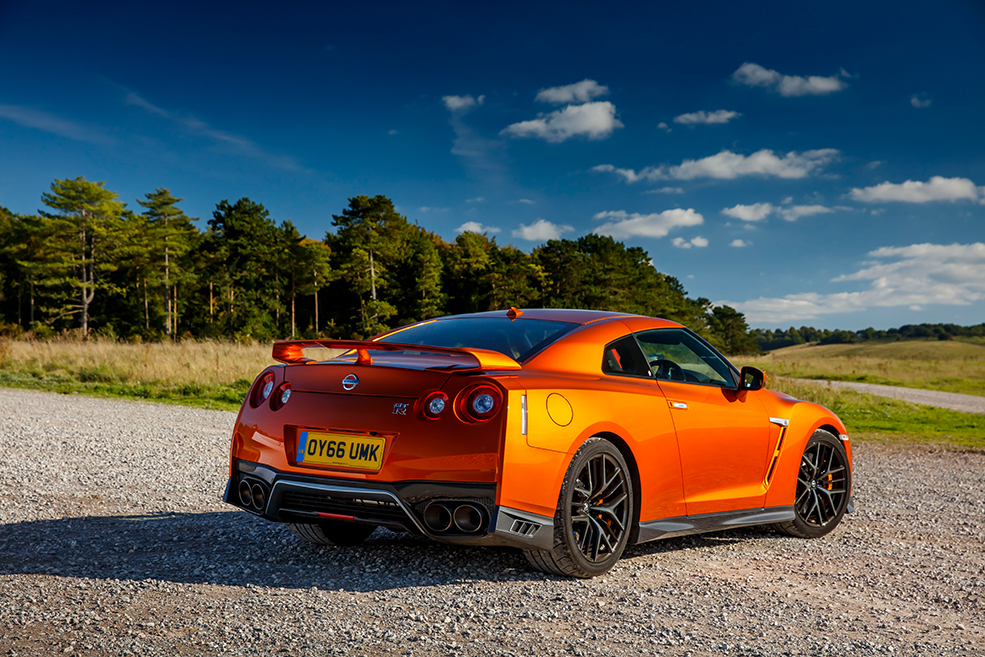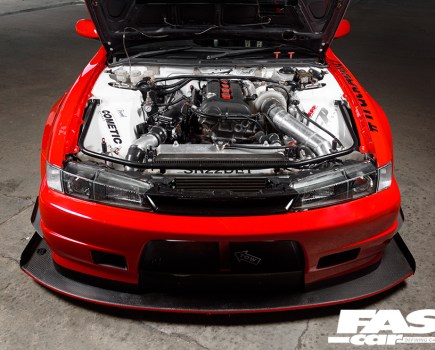Despite losing the Skyline badge, the Nissan GT-R R35 has come to enjoy the same iconic status as its ancestors. Here’s what you need to know before buying one.
The Nissan GT-R R35 has become such a stalwart of the JDM tuning scene that it’s easy to gloss over just what a staggering piece of machinery it is, especially when you consider its price. There have been a huge number of updates over its sixteen year (and still counting) life cycle, and this buyer’s guide will help you get your head around those changes and what you should be looking out for when buying one.
Nissan GT-R R35 Most Common problems
- A noisy rear differential is pretty common, and isn’t generally anything to worry about unless it’s ridiculously loud.
- A clicking noise from the front hubs will be due to accumulated dirt; cleaning the hubs and applying copper grease should sort it.
- Transmissions can suffer heavily from repeated launch control usage, so make sure all the gears select correctly.
- Correct geometry is crucial for these cars; check for uneven tire wear as a giveaway that something’s amiss.
- Check the condition of the brake discs, as they have been known to crack under heavy usage.
- Factory paint is very soft, so expect plenty of stone-chips and marks on cars that haven’t been looked after.
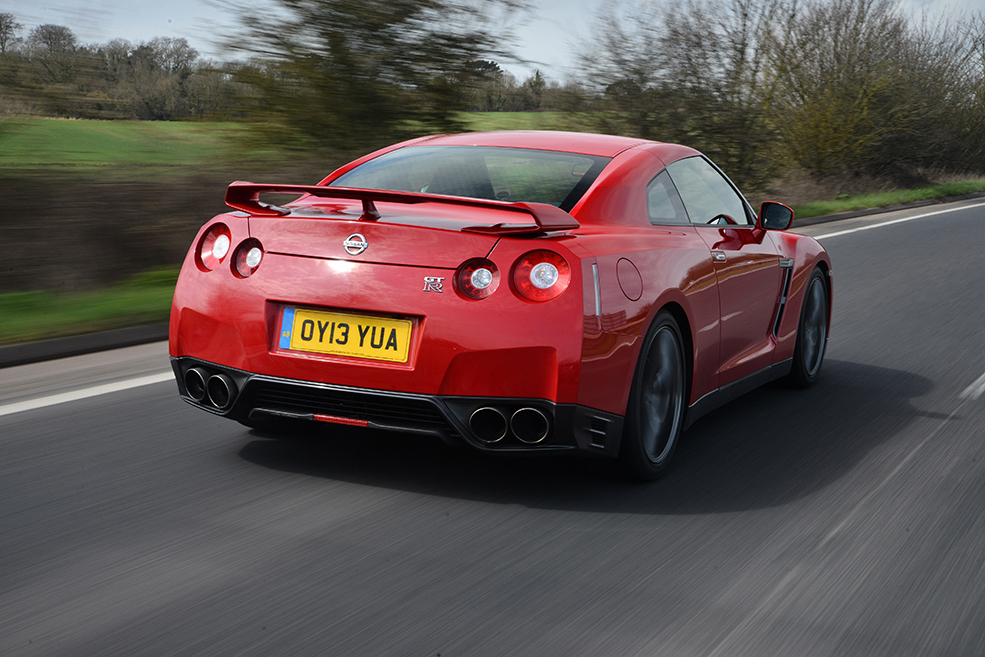
Nissan GT-R R35 history
A lot of water has passed under the bridge since the R35 GT-R debuted at the Tokyo Motor Show way back in 2007. To put that in context, when we originally clapped eyes on the first of the Skylines not to be badged as a Skyline GT-R, the world was enjoying Skins; The Simpsons Movie; and the debut of a cheery young singer named Adele; the first iPhone had just been released; and Twitter was seeing about 20,000 tweets a day (as opposed to 500m+ today). The years just fly by, don’t they?
One of the popular motoring memes of the launch was how Nissan were keen to assert that their racy new coupé was effectively untuneable; so confident were they in the precision and focus of their endeavors that they couldn’t conceive of a way to improve upon the results of their countless hours of R&D. At the time, you could see where they were coming from; all of the stories that were neatly targeted at the motoring press concerning spec and construction methods helped to build a picture of the perfect everyman supercar. The nitrogen-filled tires on their knurled rims; the unique hand-built engines crafted by eggheads in white coats in hermetically sealed laboratories; the chip-resistant chassis coating; the die-cast aluminum shock towers and carbon-composite crossmembers. The spec gets so nerdy in its wishlist perfection that it starts to sound far-fetched.
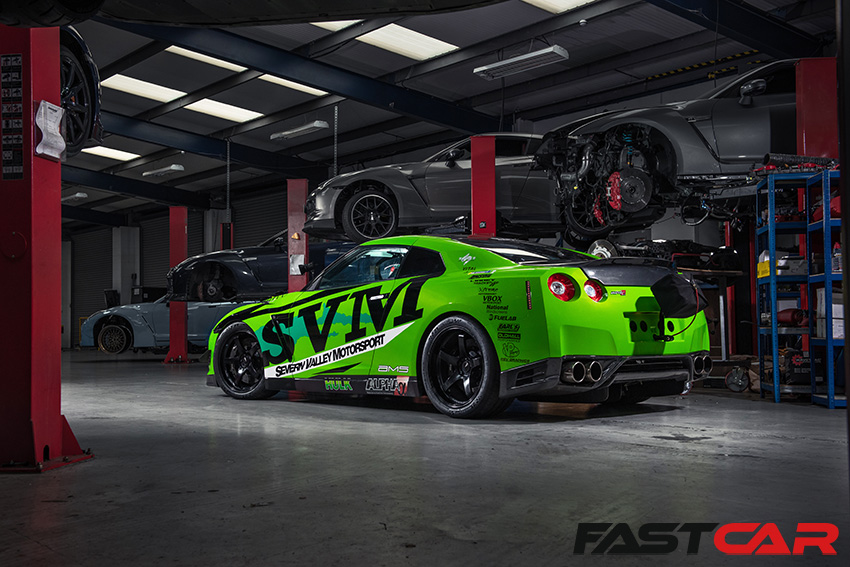
Modifying culture continues with the R35
Of course, saying the car was untuneable was really just throwing down the gauntlet; something that the aftermarket at large was happy to pick up, wave joyfully about, and enthusiastically set about proving that there’s no such thing as an untuneable car. As it’s turned out, the R35 GT-R has become one of those cars that you’re unlikely to see stock examples. People just love playing with them, and they’re incredibly receptive to tuning (see our R35 tuning guide). The Nissan GT-R package is just as impressive today as it was when it first appeared sixteen years ago, and has continued to evolve.
Nissan GT-R R35 updates
Over the past decade, the GT-R has received a healthy number of updates. In 2010, the R35 received modified Bilstein shock absorbers, revised damper and spring rates, and sturdier brake lines. Then in 2011/12, a vast array of changes arrived as part of a ‘semi-facelift’. One of the key elements of this was the transmission, which received a software tweak to soften low-speed gearshifts. In early cars, frequent hard launches exposed some gearbox fragilities. This revision seemed to do a good job of correcting that. Elsewhere, bigger brake discs and a carbon composite strut brace were added too.
New turbo inlets, revised valve timing and a newly fettled exhaust system raised power from 485hp to 530hp in 2011/12. A year later, improved airflow meant that the figure was bumped up to 545hp. In conjunction with the new-found force, these cars also benefitted from lighter, stiffer alloy wheels, reducing the 0-60mph time from 3.5 to 2.8 seconds! Importantly, these GT-Rs are not only faster, but also slightly cheaper to run than their earliest counterparts. Pre-2011 R35s tend to require a service every six months. However, these updated examples only require a check-up annually (or every 10,000 miles).
Updated suspension in 2015 improved grip, but yet more progress would be made in 2017. This time the GT-R’s overhaul was given official facelift status, clearly marked by the front bumper changes. The suspension was also given another tweak to allow for smoother everyday driving; while engine power was increased to a whopping 562hp.
Sadly, the R35 GT-R is no longer on sale in Europe due to emissions. However, the latest 2024 GT-R model for the US and Japan has seen further changes made to the model.
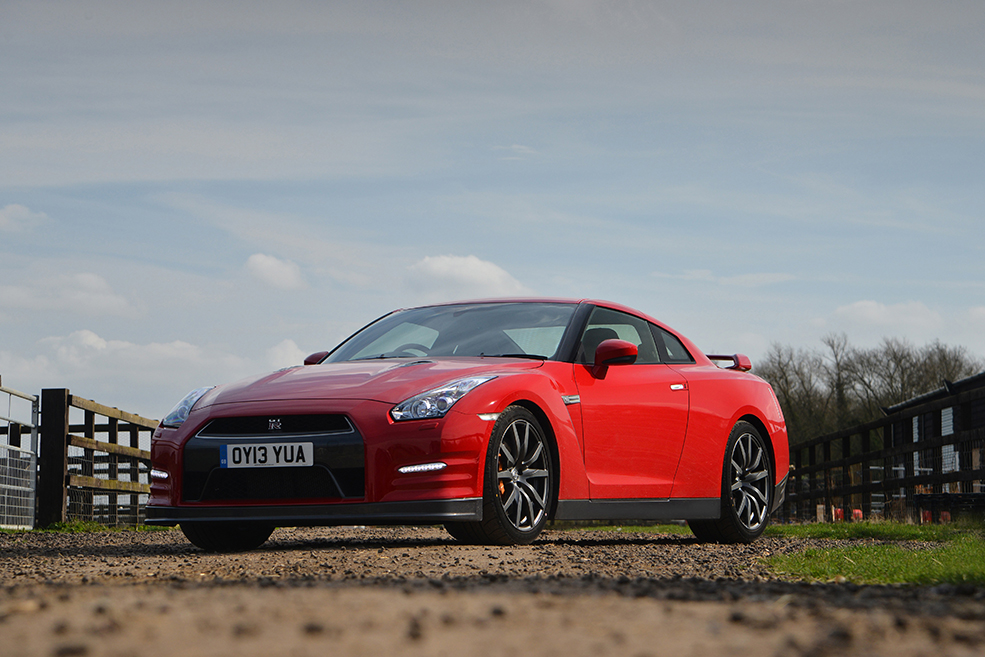
Nissan GT-R R35 buyer’s guide
Engine
The beating heart of the Nissan GT-R R35 is the VR38DETT engine; a 3.8-litre twin-turbo V6 which offered 485bhp in UK-market launch spec. Facelifts across the years variously raised this official figure to 530bhp, then 544bhp, then 565bhp. As we now know, this was merely a starting point. There are plenty of modded GT-Rs out there running 1000bhp+, even 2000+. In fact, the fastest GT-R in the world is powered by a billet block with over 2,500bhp…
The VR38 is commonly regarded to be a very strong unit, even when highly tuned. Although of course there are a number of warning signs of a motor that’s not in fine health; look out for blue smoke on a cold start, or blue or grey smoke when the turbos come on boost for evidence that attention is required.
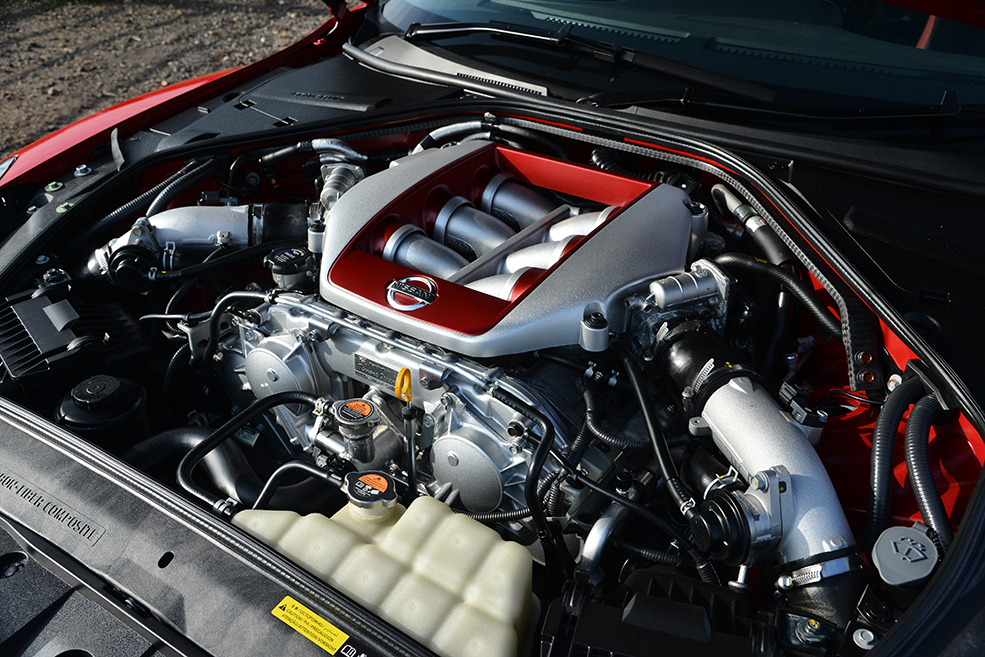
Transmission
The transmission is equally impressive. The 6-speed dual-clutch ’box offered lightning-fast shifts at launch and the tech has kept on improving. With every facelift, those shifts have got faster and smoother. It’s worth exercising caution as a buyer though, as the transmission can call time if it suffers too much abuse. This is usually from lots of launch control use; a feature which number of uses can be checked via accessing the ECU. Be sure that the gearbox correctly selects all six gears as well as reverse. A good trick is to cold-shift from first to reverse a few times. If it flashes the gear number and shifts immediately into 2nd instead of 1st, budget for repairs or walk away.
Chassis
With the power of the GT-R being such a headline-grabbing element, it’s important to remember that the chassis is real sci-fi stuff too. This is a car with such phenomenal grip that it can generate unbelievable lateral G-forces. Despite what Nissan told us, this is all improvable with aftermarket upgrades.
When looking at a Nissan GT-R R35, check for excessive tire wear on the inner edges. Also check that the tires match front and rear; this will tell you whether the chassis has been kept in the correct alignment. It will also tell you whether the owner has been looking after it properly.
A popular mod among owners is to fit a thicker front anti-roll bar; these are available from Eibach, Whiteline, Ultra Racing and various others. They have the dual benefits of improving the ride and sharpening the handling. The stock springs and dampers are very well suited to the car (of course), but again there’s scope for improvement; Litchfield has worked with Bilstein and Eibach to develop coilover setups suitable for road or track.
Brakes
Brake discs have been known to crack under prolonged heavy use on the Nissan GT-R R35, so check for damage. Also check that the car brakes in a straight line under heavy use. It’s worth noting that owners often upgrade their brakes. Alcon 380mm discs are a proven choice with the stock setup. If you’re chasing big power then there’s the option of the full-fat Alcon Big Brake Kit, which adds billet 6-pots up front and 4-pots at the rear.
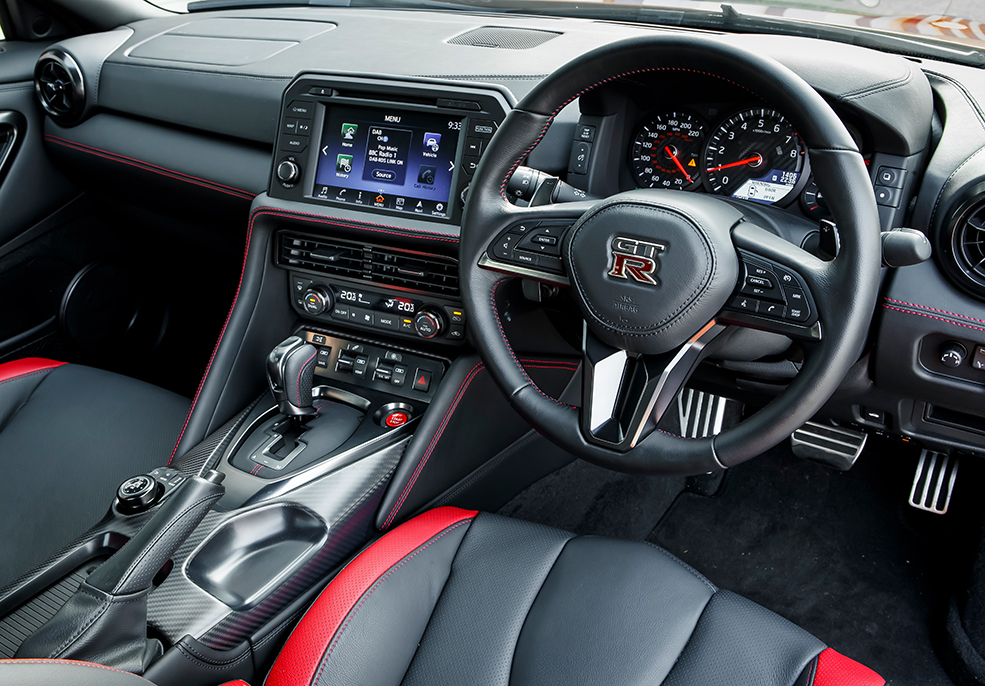
Interior
The quality of the GT-R’s interior has always been pretty decent; although it has steadily improved throughout the model’s life. 2009 was the first major spec update, when the screen was replaced with a higher-resolution one. Sat-nav also became standard, while the stereo came with a 40gb hard drive. More carbon trim started to appear from 2010, along with magnesium paddle-shifters and individual climate control. The following year saw the Bose Surround Sound system introduced.
From the 2017 facelift buyers got an 8” infotainment screen and a new carbon fiber center console. The 2017 car also got a different steering wheel and extra leather trim.
There are a few issues to look out for in here; see if the dash has flickering or missing LED lights. Make sure you press every button to ensure they’re all working; the stereo, the air-con, the radio, the lot. Speakers can work their way loose, which might explain the odd rattle. The driver’s side seat bolster is also prone to wear.
It’s a comfy and GT-like place to be, although it may be tempting to rework the cabin in more of a racy style; perhaps with a set of Recaro Profi SPA seats, Cusco rollcage, Mine’s steering wheel, and a tasteful retrim in Alcantara.
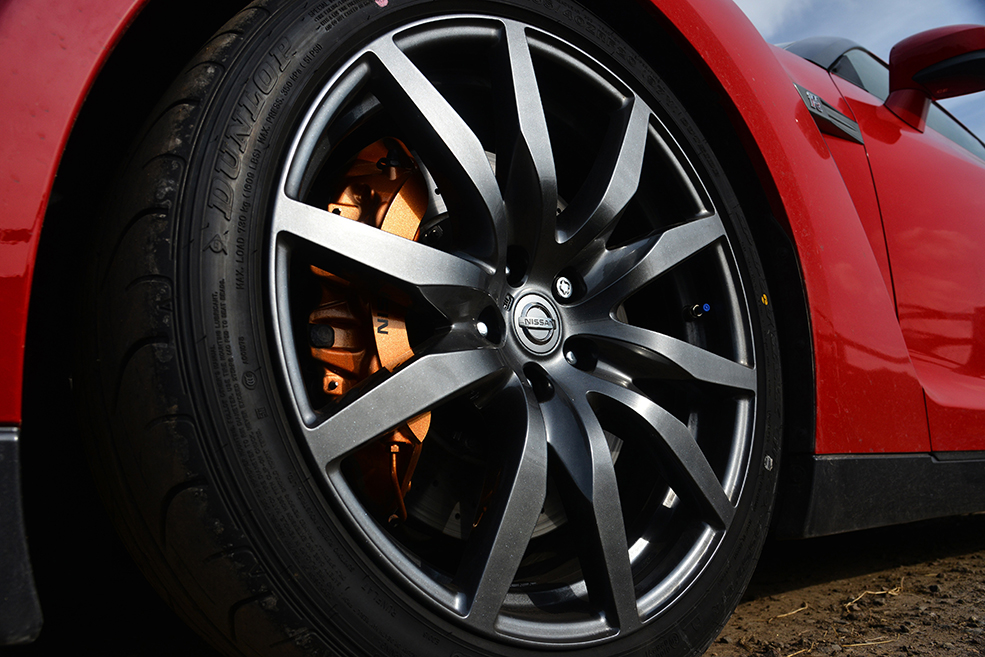
Exterior
The GT-R’s body is extremely aerodynamic, with a drag coefficient of just 0.27. It features an exotic mix of aluminum and carbon composite along with the steel; so it’s crucial to check carefully for accident damage, as it can be particularly hard to perfect. Ensure that all the shut lines are as they should be, especially around the bonnet; this has a hydraulic-ram pedestrian protection system that can be eye-wateringly expensive to replace if triggered. It’s also worth noting that the factory paint in some shades (particularly black) is very soft. It’s extremely prone to chips and scratches. Some owners opt for paint protection film, others go for a vinyl wrap or even a full repaint. Check the undertrays for damage too, and the vulnerable front lip spoiler. It’s also worth noting that the headlights can mist up as well.
